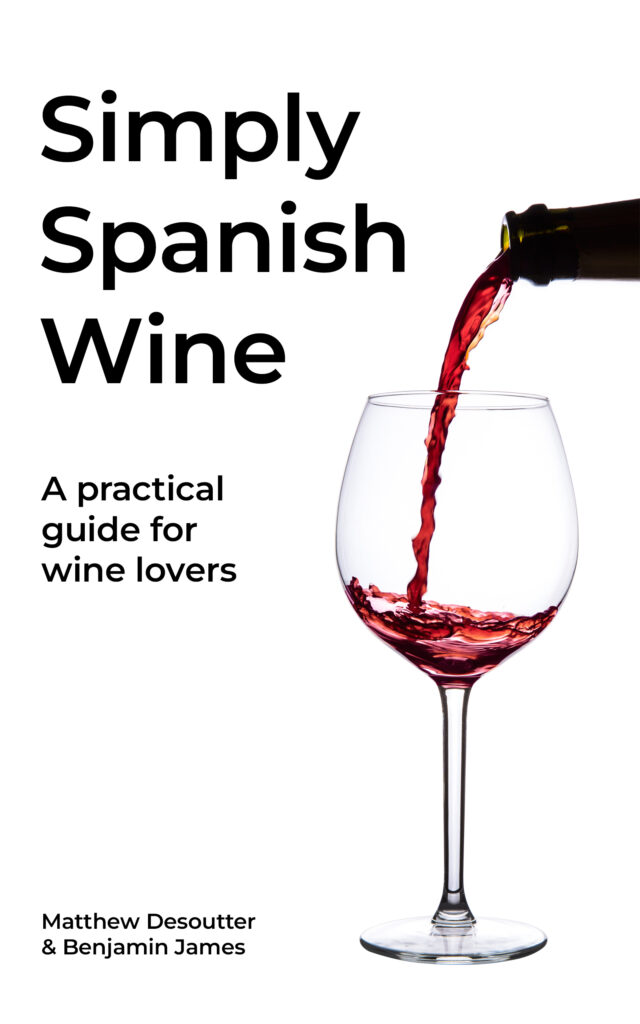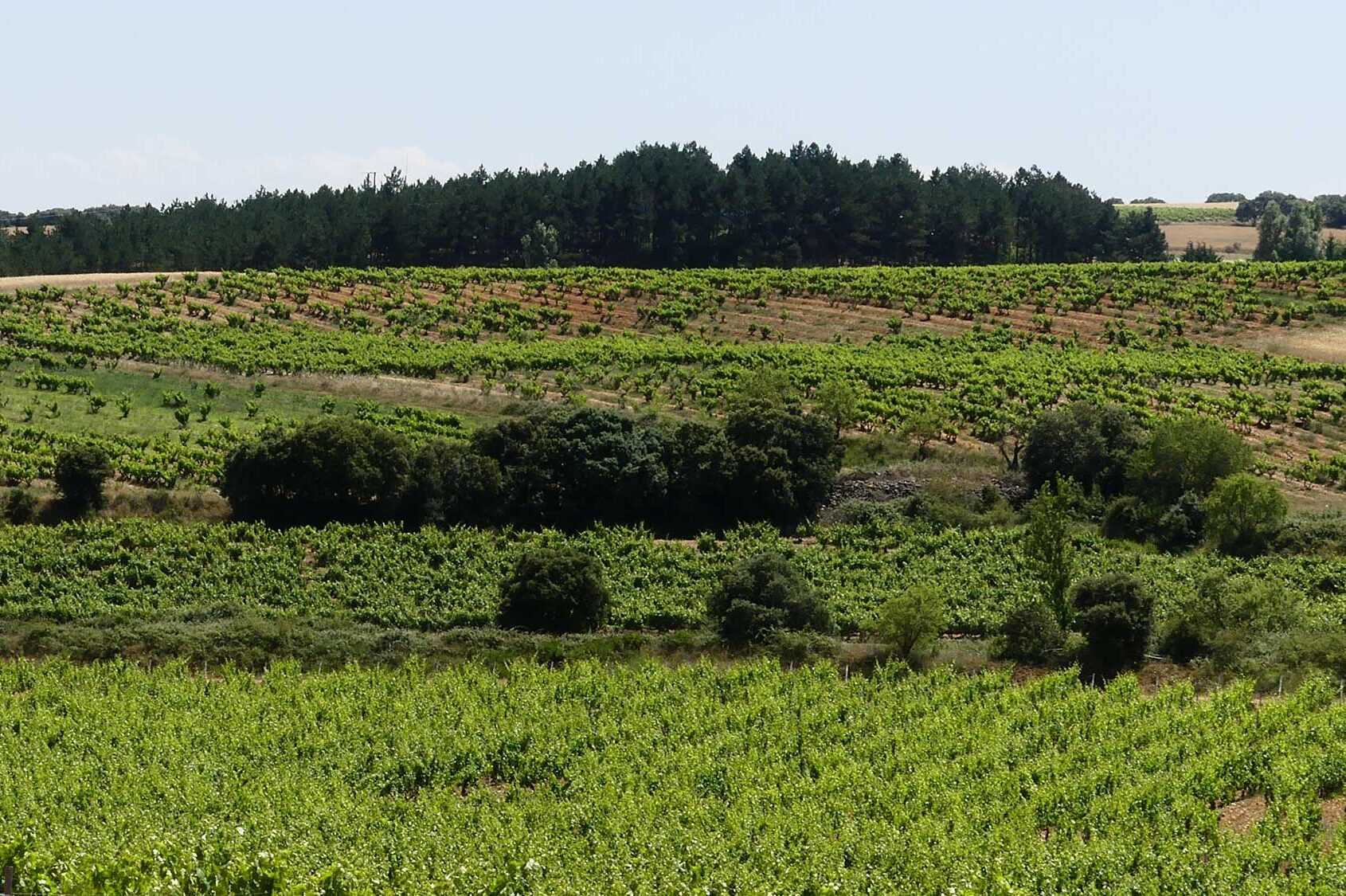Order a glass of red wine in any bar in Spain and you’ll almost always be asked whether you want a “Rioja or a Ribera”. They are two of the best-known Denominaciones de Origen (DOs), and the ‘go-to’ red wines for Spanish wine fans around the world.
But popular as they are, even quite seasoned wine drinkers would be hard-pressed to tell you the main differences between the two. So we thought we’d give you a basic outline of how these famous wine-producing regions compare.
Let’s start with some history.
Rioja’s modern-day fame as a winemaking region is thanks in large part to the efforts of people like Luciano Murrieta and Camilo Hurtado de Amézaga (better known as the Marqués de Riscal). Those far-sighted Spaniards went to Bordeaux in the mid-19th century to learn about winemaking and returned to Spain ready to invest time and money in making fine wine.

Vineyard in Rioja Alavesa
At about the same time, a certain Eloy Lacanda y Chaves was also learning his craft in Bordeaux. He used his newly acquired wine knowledge to set up a vineyard in what is now DO Ribera del Duero, near Valbuena on the banks of the Duero river. That vineyard was called Vega Sicilia, and is now one of Spain’s most well-known and respected wineries.
All three were visionaries; putting a focus on quality at a time when most Spanish producers were intent on producing as much wine as possible, the bulk of which was exported to France. And all three helped to lay the foundations for the two winemaking regions we know today.
Fast forward a few decades and that focus on quality over volume helped drive the first Denominaciones de Origen with rules and regulations. Rioja became an official DO back in 1925, and in 1991 it achieved DOCa status – a sort of DO+ status with slightly stricter rules.
In Ribera, things moved at a slightly slower pace. In fact, the region was only officially recognized as a DO in 1982. But since then, growth has been spectacular – going from 6,000 Ha at the start to more than 22,000 Ha today. That’s still a way behind Rioja’s 65,000 Ha, but Ribera del Duero now boasts some 300 bodegas and more than 8,000 growers.

River Duero flowing through Ribera del Duero. © Abel Valdenebro
Rioja and Ribera del Duero are both in the north of Spain and both have rivers at their heart. Rioja follows the river Ebro as it flows east to the Mediterranean. Whilst at the heart of Ribera del Duero is the river Duero which flows west to the Atlantic and which gives Ribera del Duero its name (literally “Bank of the Duero”).
Altitude and climate are important factors in both places. Rioja benefits from warm winds which travel from the Mediterranean up the Ebro valley. And it’s protected from the cold winds and rain of the Cantabrian Sea by mountains to the north. The result: a more moderate continental climate which allows grapes to mature gradually.
Meanwhile, Ribera is further away from maritime influences and has higher average altitudes. That make for sharper temperature differences between night and day, and hotter summers. So grapes tend to ripen that much faster.
Generalisations risk distorting the picture, and you’ll find local differences in each region. But on the whole Rioja’s milder, more uniform climate can help to produce more elegant, lighter wines. Whilst Ribera’s harsher climate encourages tougher, more resistant grapes which can give stronger, more concentrated wines.
It’s true that one big thing the two regions have in common is the Tempranillo grape, which in Ribera is often referred to as Tinta Fina. But even using the same grape, there are subtle differences.
For a start, there’s blending. In Rioja, winemakers will often blend Tempranillo with other varieties like Garnacha, Mazuelo (the local name for Carignan), or Graciano. Those are local grapes, so even in blended wines, you’re getting a characteristic expression of the region.
Meanwhile in Ribera blends tend to be with grapes of French-origin like Cabernet Sauvignon or Merlot. Those grapes often give more colour and texture to the wines than you’ll find in Rioja. And whilst blending isn’t uncommon, 90% of Ribera del Duero wines are single varietals from Tempranillo.
So how can you taste the difference? Well, a simple test is to pour out a glass of the wine and give it a good sniff. If you get intense aromas of red fruits like strawberry, the wine is more likely to be a Rioja. If the aromas are more of mature or black fruit like blackberries, then the wine is more likely to be Ribera.
Some experts say Ribera wines can have more lactose, yoghurt-like aromas, thanks to more limestone in the soil. A more intense colour is another clue. And Ribera wines can also be slightly more astringent – slightly drier and rasping on the palate – than wines from Rioja, thanks to higher tannins from the harsher climate.
Like everything in the world of wine, there’s much more to discover. This article has hopefully given you an initial overview of the similarities and differences between these two well-known regions. But the best way to get a real understanding of the wines from each is to pour yourself a glass and do some tasting yourselves.
Cheers!

Enjoyed this content?
Then why not get a copy of Simply Spanish Wine: A Practical Guide for Wine Lovers? Available now on Amzaon US, UK, Spain and more.

